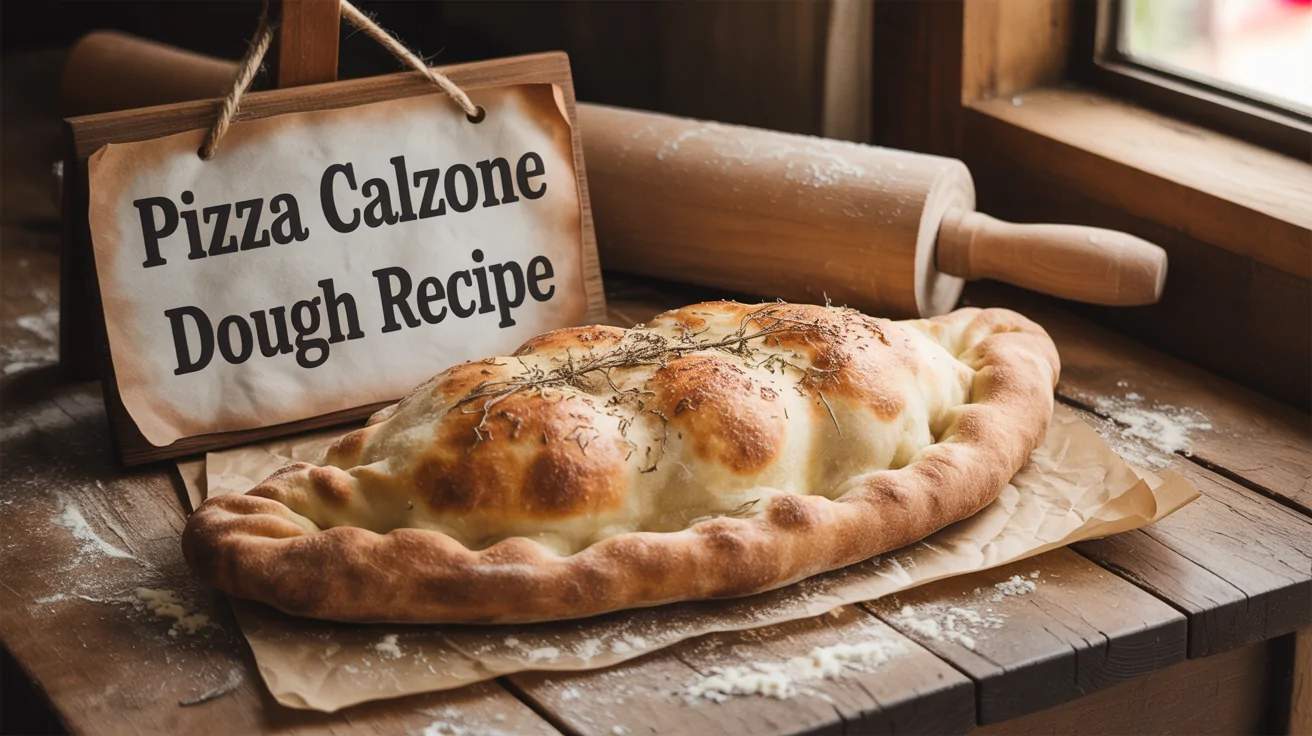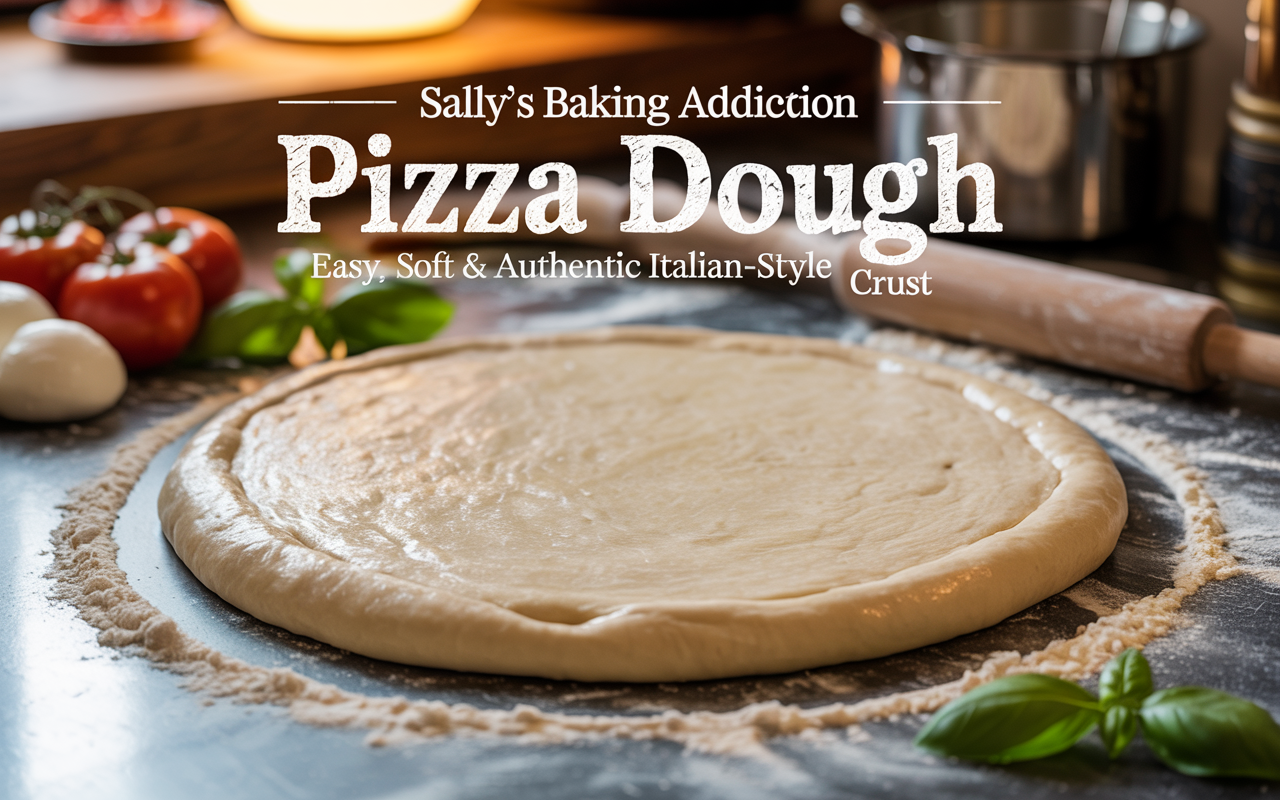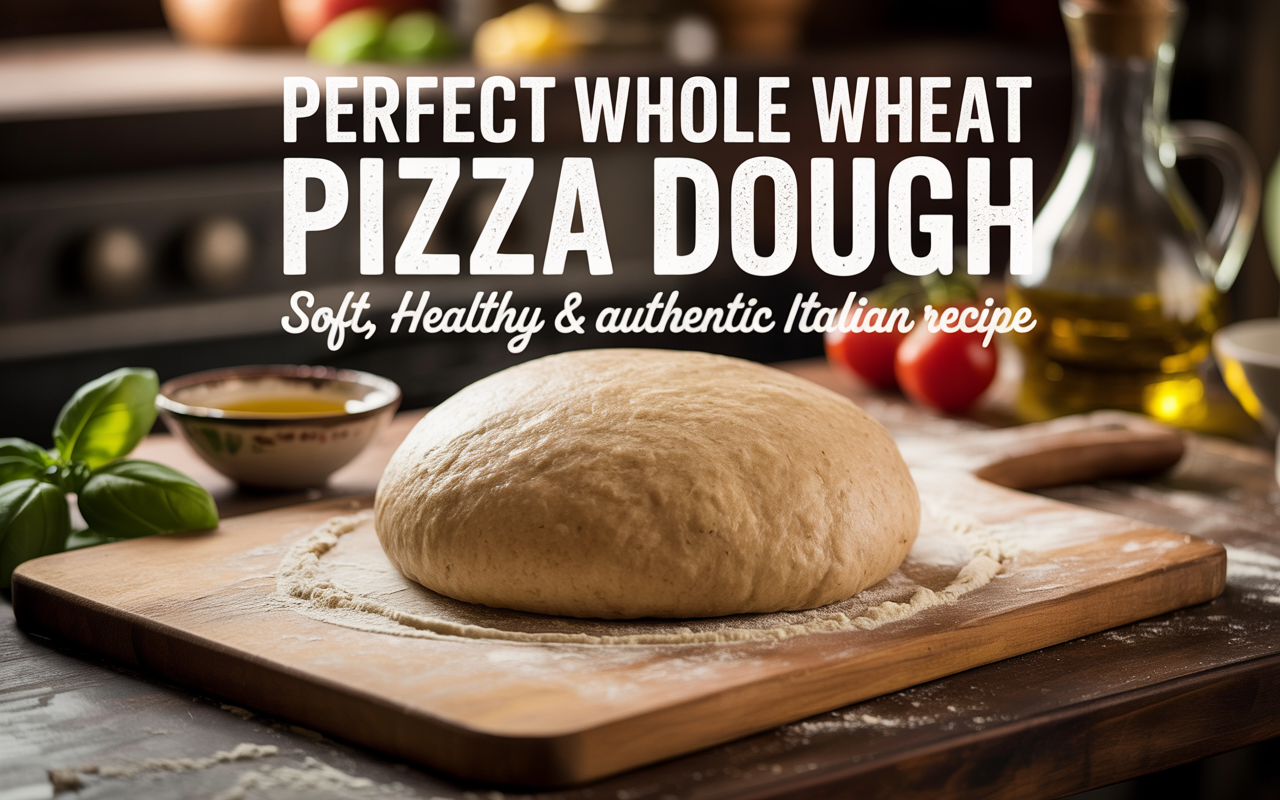🥟 The Ultimate Pizza Calzone Dough Recipe – Soft, Chewy, Authentic Italian
If you’ve ever bitten into a pizza calzone — that golden, folded-over pocket of gooey cheese, rich tomato sauce, and savory toppings — you know it’s hard to resist. But here’s the truth: the secret to a perfect calzone isn’t just the filling. It’s the dough. Soft, chewy, and perfectly elastic dough makes every bite melt in your mouth.
After years of experimenting in my kitchen, testing different flour types, yeast ratios, and kneading methods, I’ve perfected a pizza calzone dough recipe that’s simple, reliable, and yields restaurant-quality results every time. Today, I’ll walk you through everything — from ingredients to tips, FAQs, and final thoughts — so you can master this Italian classic at home.
🥣 Ingredients for Pizza Calzone Dough
Here’s a table of all the ingredients you’ll need to make enough dough for 4 medium calzones:
| Ingredient | Measurement | Notes |
|---|---|---|
| All-purpose flour | 3 cups (375g) | “00” flour works for extra soft dough |
| Warm water | 1 cup (240ml) | About 105°F / 40°C |
| Active dry yeast | 2 ¼ tsp (1 packet) | Fresh yeast = better rise |
| Sugar | 1 tsp | Feeds the yeast |
| Salt | 1 ½ tsp | Balances flavor |
| Olive oil | 2 tbsp | Adds richness and elasticity |
| Cornmeal or flour (for dusting) | As needed | Prevents sticking on the tray |
Pro tip: For a slightly richer dough, you can substitute 2 tbsp of water with milk. This makes the dough tender and slightly sweet.
🍞 Step-by-Step Pizza Calzone Dough Recipe
Follow these steps closely — the magic is in the kneading, rising, and handling of the dough.
1️⃣ Activate the Yeast
In a small bowl, combine warm water and sugar. Sprinkle in the yeast and stir gently. Let it sit for 8–10 minutes until it becomes frothy.
Chef’s tip: If the mixture doesn’t bubble, the yeast is inactive. Always use fresh yeast for best results.
2️⃣ Make the Dough
In a large mixing bowl, combine flour and salt. Make a well in the center and pour in the yeast mixture and olive oil. Mix until a sticky dough forms.
Turn the dough onto a floured surface and knead for 8–10 minutes until smooth, elastic, and slightly tacky. The kneading process develops gluten, giving you that soft, chewy texture we all love in calzones.
3️⃣ First Rise
Place the dough in a lightly oiled bowl, cover it with a damp cloth, and let it rise in a warm spot for 1–2 hours. It should roughly double in size.
Pro tip: For more flavor, refrigerate the dough overnight. Slow fermentation enhances the dough’s texture and gives a subtle tang.
4️⃣ Portion the Dough
Once risen, punch down the dough gently to release air bubbles. Divide it into 4 equal portions for medium calzones.
Roll each portion into a ball and cover lightly with a cloth to prevent drying out.
5️⃣ Shape the Calzones
- Roll each dough ball into a circle about 8 inches in diameter.
- Spoon your favorite filling (cheese, tomato sauce, pepperoni, vegetables) on one half, leaving a ½-inch border.
- Fold the dough over and press edges together, crimping with a fork or twisting to seal.
Tip: Avoid overfilling — too much sauce or cheese can leak during baking.
6️⃣ Second Rise (Optional)
Let the shaped calzones rest for 15–20 minutes. This makes the interior lighter and fluffier.
7️⃣ Bake the Calzones
Preheat your oven to 425°F (220°C). Dust a baking sheet with cornmeal or flour to prevent sticking. Place the calzones on the sheet and bake for 15–20 minutes until golden brown.
Pro tip: Brush the tops lightly with olive oil or garlic butter before baking for a shiny, flavorful crust.
🌿 Tips & Tricks for Perfect Calzone Dough
- Flour choice: Using “00” flour gives a tender, pizza-shop style dough.
- Don’t skip kneading: Proper kneading develops gluten, giving you chewiness.
- Temperature matters: Warm water helps activate yeast, but too hot will kill it.
- Slow fermentation: Refrigerating the dough overnight improves flavor and texture.
- Sealing edges: Properly sealing prevents filling from oozing out.
- Cornmeal dusting: Prevents sticking and adds a rustic crunch to the base.
❓ FAQ – Pizza Calzone Dough Recipe
Q: Can I freeze the dough?
Yes! After the first rise, divide and wrap in plastic. Freeze up to 3 months. Thaw in the fridge overnight before using.
Q: Can I use whole wheat flour?
Yes, but replace only half the flour to maintain elasticity and soft texture.
Q: Can I make this vegan?
Absolutely! This dough is naturally vegan — just ensure your fillings are plant-based.
Q: How long does the dough last in the fridge?
Up to 48 hours after the first rise. For best results, bake fresh.
Q: Can I use store-bought dough?
Yes! But homemade dough yields superior flavor and chewiness.
Q: How can I make the crust crispier?
Brush with olive oil, bake on a preheated stone, or broil for the last 1–2 minutes.
🍕 Filling Ideas for Your Calzones
- Classic Margherita: Tomato sauce, mozzarella, fresh basil.
- Meat Lovers: Pepperoni, ham, sausage, mozzarella.
- Veggie Delight: Bell peppers, mushrooms, olives, spinach, mozzarella.
- Buffalo Chicken: Cooked chicken, buffalo sauce, and shredded cheese.
- Four Cheese: Mozzarella, ricotta, parmesan, provolone.
I often mix ricotta with spinach for a creamy, indulgent filling — it’s a crowd favorite.
❤️ Final Thoughts
Making pizza calzone dough at home is easier than it sounds. The key is fresh ingredients, proper kneading, and patience with rising. Once you master this dough, the sky’s the limit — stuff it with anything you love, bake golden brown, and enjoy a little piece of Italy in your kitchen.
These calzones are perfect for family dinners, parties, or a fun weeknight meal. Serve them warm, enjoy the gooey cheese pull, and watch everyone devour them in minutes.
Remember: practice makes perfect, and the dough will reward you with soft, chewy, and flavorful calzones every single time. Buon appetito! 🥟🧀🍅
See Also: Pizza Bread Recipes – Soft, Cheesy, Homemade Italian Goodness







